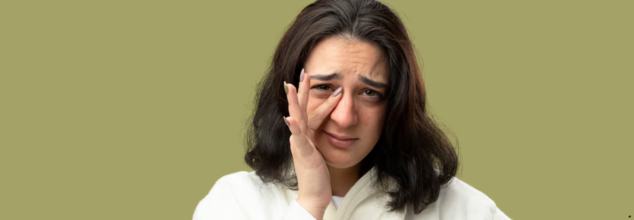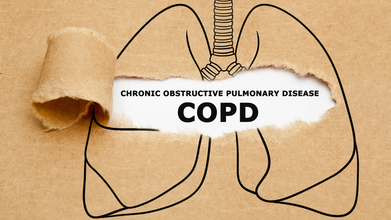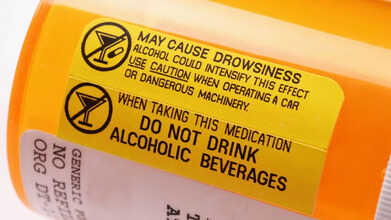- Health Conditions A-Z
- Health & Wellness
- Nutrition
- Fitness
- Health News
- Ayurveda
- Videos
- Medicine A-Z
- Parenting
First Sign Of Diabetes Might Show Up In Your Eyes—Here’s What To Look For

Credits: Freepik
Diabetes is known for its impact on blood sugar but one of the first and often overlooked warning signs may appear right in front of your eyes—literally. Changes in vision might be the first sign. These early signs of diabetes in eyes and diabetic eye symptoms often appear before traditional diabetes symptoms
The Centers for Disease Control and Prevention (CDC) reports that an estimated 30.3 million adults in the United States have diabetes, and nearly 90% of them have Type 2 diabetes—a condition in which your body becomes resistant to insulin and has difficulty regulating normal blood sugar levels. While the disease is usually linked to complications such as neuropathy or kidney disease, your eyes may be the first organ to exhibit signs of suffering.
The eye is a sensitive organ covered in a close network of blood vessels, particularly in the retina—the thin layer of tissue at the back of your eye that facilitates vision. High blood sugar levels over time can hurt these small blood vessels, making them become inflamed, leaky, or clogged. That's called diabetic retinopathy, and it's one of the first—and possibly most destructive—complications of diabetes.
Over one-third of working-age population with diabetes already have signs of diabetic eye disease, and it is still a major cause of blindness among this group. Many are also unaware they have it—until their eyesight is already compromised.
What is Diabetic Retinopathy?
Diabetic retinopathy often progresses painlessly and without any signs, at least in its early stages. That's why regular eye exams are so important—despite your vision appearing completely normal.
If left uncontrolled, diabetic retinopathy may result in impaired or even complete vision loss. Worse, the damage tends to be permanent. Early detection and therapy can slow or even prevent progression, but the secret is to be vigilant and preventive.
Early Signs of Diabetes in Eyes You Can't Ignore
Floaters
Tiny specks, cobwebs, or worm-like forms floating in your line of sight are usually harmless. But a sudden proliferation of floaters—particularly if there's blurred or obscured vision—may indicate bleeding into the retina, a symptom of diabetic retinopathy.
Dark Spots
Any dimming of vision or blind spots, especially in the central visual field, are warning signs. These "blockages of vision" can indicate swelling of the retina or hemorrhaging—and need to be seen by an ophthalmologist right away.
Blurred Vision
Changes in blood sugar levels can disrupt your eye's ability to focus, causing fleeting or ongoing blurring. This can make it harder to read, drive, or identify faces and can continue to get worse if left unchecked.
Vision Loss or Shadows
Partial blindness, i.e., reduced peripheral vision or inability to see in dim light, can be a sign of advanced retinopathy or retinal detachment. Vision can even black out for a short time—a warning of extreme vascular damage.
If you have any of these symptoms, even if you don't have diabetes, it is important to consult an eye care professional immediately.
What Causes Diabetic Eye Damage?
Diabetic retinopathy occurs when high blood glucose levels start damaging the tiny blood vessels of the retina—the light-sensitive nerve tissue at the back of the eye. The vessels can become clogged, leak fluid or blood, or cause new and fragile, abnormal vessels to grow through a process known as neovascularization. This cascade can result in swelling, inflammation, scarring, and, eventually, retinal and optic nerve damage. In bad cases, the retina can come loose or fluid will pool in the macula (the retina's center portion), producing a condition called macular edema. These issues can lead to permanent loss of vision if left untreated.
Even though any diabetic is susceptible to developing diabetic retinopathy, there are some populations that are particularly at risk. These include those with Type 1 and Type 2 diabetes, especially those with poorly managed blood glucose levels. Pregnant women who develop gestational diabetes and individuals who have had diabetes for longer than five to ten years have a higher risk of retinal complications. Those with coexisting conditions like high blood pressure or elevated cholesterol are at even greater risk, as these issues can accelerate the damage to blood vessels in the eyes. Research indicates that up to 75% of people with Type 1 diabetes will develop some form of retinopathy, while approximately 50% of individuals with Type 2 diabetes show signs—often within the first decade following diagnosis.
Can Diabetic Retinopathy Be Cured?
Regrettably, diabetic retinopathy has no cure. The condition can be prevented from worsening if intervention is made early. Thanks to the advancements in medical technology, a number of treatment avenues can be employed. Anti-VEGF injections are usually used to prevent abnormal vessels from growing on the retina. Laser therapy is also an effective method that involves destroying leaking vessels and preventing vision loss. In more serious instances, vitrectomy surgery might be necessary to eliminate scarring tissue or blood within the eye. Most importantly, the most important thing is to control diabetes properly—adhering to healthy blood sugar levels, blood pressure, and cholesterol can go a long way in preventing serious eye complications in the long run.
Protect Your Vision with These 3 Non-Negotiable Steps
If you’ve noticed floaters, blurriness, or dark spots, don’t dismiss them. These could be more than visual annoyances—they might be early cries for help from your body. Although it's clear that preventive care, lifestyle changes, and monitoring are your best weapons against diabetes-related blindness.
1. Prioritize Lifestyle Interventions
Exercise, proper diet, and weight control are important. Include low-impact activity such as walking, yoga, or swimming. Follow a diet with high fiber, antioxidants, and whole grains and reduce saturated fats and refined carbohydrates.
2. Monitor Blood Sugar and A1C Levels
Regular blood sugar checks and routine monitoring of A1C levels (which measure average glucose over three months) can help you detect and correct abnormal trends. Aim for an A1C below 7%, or as recommended by your healthcare provider.
3. Don’t Skip Eye Exams
Your diabetes care regimen should include a dilated eye exam once a year. These tests alone can detect early signs of diabetic retinopathy. More frequent examinations may be warranted if risks or symptoms rise.
Your vision is not simply a measure of how well you see—it's literally a window to your overall health. In some cases, eye problems might be the first sign that you have diabetes. That's why receiving regular eye exams—even in the absence of obvious symptoms—is a key component of preventive care.
Why COPD Is Now Affecting People in Their 20s and 30s

Credits: Canva
Chronic obstructive pulmonary disease (COPD) has long been seen as a condition of older adults, typically tied to years of smoking. But across India, pulmonologists are increasingly diagnosing it in people in their 20s and 30s. This shift, experts say, reflects a deeper and more troubling change: young adults are growing up and living in environments where the lungs never truly get a chance to breathe clean air.
A Shift From “Smoker’s Disease” to “Exposure Disease”
The biggest change is the cause itself. As Dr. Raja Dhar, Director & HOD, Pulmonology, CK Birla Hospitals, CMRI Kolkata, explains, “COPD is increasingly becoming an ‘exposure disease’ rather than a ‘smoker’s disease.’ In India, non-smoking COPD is numerically a much larger problem.”
This exposure begins early—sometimes in childhood.
Dr. Dhar highlights how even limited exposure can have lifelong consequences: “Severe airway obstruction can be traced back to just six to seven years of biomass smoke exposure in a poorly ventilated kitchen during a child’s formative years.”
Dr. Harshil Alwani, Consultant – Pulmonology, CK Birla Hospitals, Jaipur, also points to the changing risk profile. According to him, “newer epidemiological data show that non-smoking drivers—especially air pollution and occupational exposures—are playing a disproportionately large role in younger people.” He adds that rapid urbanisation means more young adults are chronically breathing polluted air from childhood onwards.
Improved diagnosis and greater awareness also mean younger patients with persistent symptoms are now being evaluated more often, he notes.
Beyond Smoking: The Real Culprits Behind Early COPD
Air Pollution
Both experts agree that polluted air is the biggest trigger today. Dr. Alwani explains that long-term exposure to PM₂.₅ is directly linked to lung decline and COPD. “Recent research shows that temperature and humidity modulate the harmful effect of PM₂.₅, making COPD risk worse under certain climatic conditions,” he says.
Dr. Dhar adds that India’s air quality is deteriorating nationwide: “Ambient outdoor air pollution is a severe risk, as air quality across 98% of India is worse than WHO standards.”
Indoor Pollution
Household pollution remains a massive issue. Biomass fuel used for cooking is, as Dr. Dhar puts it, “the largest non-smoking contributor, resulting in numbers approximately three times that of smoking-related COPD.”
Occupational Hazards
Young adults working in construction, mining, welding, or factory settings face daily exposure to dust, fumes, and chemicals. Dr. Alwani notes that such environments “carry a significantly increased risk.”
Childhood Lung Infections
Recurrent infections can impair lung development and reduce lung reserve, making early-onset disease more likely.
Genetic Factors
Conditions like alpha-1 antitrypsin deficiency, though rare, still contribute when combined with environmental triggers.
Delhi’s Winter Pollution: A Direct Route to Lung Damage
Every winter, Delhi’s smog becomes a health emergency. According to Dr. Dhar, “High winter pollution, particularly hazardous levels of PM2.5, acts as a chronic, low-grade chemical burn on the young respiratory system.”
Dr. Alwani adds that winter inversion traps pollutants closer to the ground, amplifying PM₂.₅’s damage.
The Vaping Problem
Vaping and e-cigarettes, widely perceived as harmless, have added a new layer of risk. Dr. Alwani warns, “Vaping is not benign. Its aerosols contain volatile compounds, heavy metals, and ultrafine particles that trigger inflammation and oxidative stress—central pathways to COPD.”
Dr. Dhar echoes this concern: “Any inhalation of heated chemical aerosols is a significant lung irritant and pro-inflammatory agent.”
Symptoms Young Adults Should Never Ignore
Doctors urge young adults not to dismiss symptoms like:
- Persistent cough
- Breathlessness during routine activity
- Wheezing or chest tightness
- Frequent colds or bronchitis
- Fatigue or reduced stamina
Why Early Diagnosis Matters
Early spirometry can dramatically change outcomes. As Dr. Dhar puts it, “Early intervention allows us to remove the source of exposure and start therapy, which can effectively preserve the patient’s remaining lung function.”
Dr. Alwani adds that catching the disease early can “significantly slow further lung damage” and prevent long-term complications.
International Men's Day: Millions of Men May Be Living With Undetected Autoimmune Disorders, Know What They Are

Credits: Canva
On International Men's Day, we shift our focus on men's health and why is it important to talk about it. Time and again experts, doctors, and studies have shared how men generally visit GPs less than women. As per the NIH, US, the consultation rate is 32% lower in men than women. The difference is often attributed to a combination of women being more willing to admit sickness and seek help, while cultural factors and barriers for men keep them away from seeking help. However, not anymore, because both sexes require help when they need, especially when it is about their health.
Also Read: The Kessler Twins Die By Assisted Suicide in Germany; How It Differs From Euthanasia
As per a 2024 study published in the Journal of Clinical Investigation, about 5.7 million men could be living with an autoimmune disease that they do not even know about. The disease in men are often overlooked, all thanks to the social barriers.
Sex chromosomes play a key role in predisposing men or women to an autoimmune disease. Females have XX chromosomes, while male have XY chromosome and each chromosome carries gene sequence, which means specific pieces of DNA. Since X chromosome carries a bunch of gene related immunity,, having two of them could explain why women often have a higher rate of autoimmune diseases.
However, men are less likely to book time with their doctors, which could impact the discrepancies between sexes. They could thus often be undiagnosed or could flag their symptoms only when the disease has progressed.
Four Autoimmune Diseases Men Should Be Aware Of
Psoriasis
This is an inflammatory skin condition which affects both men and women. However, studies including the one published in 2023 in the International Journal of Women's Dermatology have suggested that men could develop this condition near their genitals and butt than women.
Also Read: Delhiites, Skip Your Morning Walk, You May Be Inhaling 3x Toxic Air Than Usual, According To Doctor
Ankylosing Spondylitis or AS
As happens due to the inflammation of the spine's joints and ligaments and could cause back pain and stiffness. While the condition is rare in itself, it could affect men more than women, that too at a younger age, usually below 40. A South Korean study from 2018, published in Scientific Reports, AS was 3.6 times more prevalent in men than women.
Type 1 Diabetes
The 2018 report by the Centers for Disease Control and Prevention, (CDC), US, provides data that type 1 diabetes may be slightly more in common in men than women. Though, other studies have been a mixed bag. Unlike type 2 diabetes, type 1 is an autoimmune disease, which means, here immune system attacks are specialized. What men should know is that both types of diabetes could up their risk of erectile dysfunction (ED) due to persistently high blood sugar, which could harm their nerves and blood vessels.
A 2016 study published in the International Journal of Impotence Research found that nearly 60% of 151 men being treated for type 1 diabetes had mild ED.
Inflammatory Bowel Disease (IBD)
The most common forms are Crohn's disease and ulcerative colitis, that take hold of digestive system. Chronic inflammation in the gut spikes the risk of colorectal cancer, which is one of the leading cause of death in men between 20 to 49 of ages. In fact, a 2023 study published in the journal Cancers noted that men with IBD faced a higher risk of developing colorectal cancer than women with IBD.
What Does A Black Box Warning On Your Prescription Drug Really Mean?

Credits: Canva
Not every medicine carries the same level of risk. Some drugs can trigger reactions that are severe or even life-threatening. When that possibility exists, the manufacturer is required to place a special notice inside the prescribing information. This highlighted section is known as a black box warning.
A black box warning is meant to draw clear attention to the most serious dangers linked to a drug. Many medicines fall under this category. Still, having the warning in place does not automatically make the treatment unsafe. When a drug is used correctly and monitored by a trained professional, the benefits may outweigh the risks.
The sections below outline what an FDA black box warning means, why a medicine might receive one, and how it may influence your treatment plan.
What Is An FDA Black Box Warning And What Does It Signify?
A black box warning is the strongest caution that the FDA can attach to a prescription drug. You might also see it described as a boxed warning.
The presence of this warning does not mean a person should never take the medication. Instead, it alerts doctors and patients to serious potential harm. This information helps clinicians decide who is an appropriate candidate and under what circumstances the drug should be used.
Many medicines with boxed warnings remain the best or only option for certain conditions.
How Serious Is A Black Box Warning?
A drug receives this type of label when it has been linked to outcomes such as permanent injury, hospitalisation, or death. These warnings should be read carefully, and patients should discuss them openly with their healthcare provider.
Doctors follow specific precautions when prescribing drugs that carry this label to minimize unnecessary risk.
Where Can I Find A Drug’s Black Box Warning?
The warning sits at the very top of the medication’s official package insert. Its placement is deliberate so it stands out immediately. The text is printed inside a bold black border, which is how the term “black box” took hold.
You may not always receive the full package insert from the pharmacy. However, you might receive a medication guide if the drug is considered high-risk. These guides describe proper use and highlight major side effects. You can also look up medication guides online.
Information about boxed warnings is available from multiple sources. The FDA website, the drug manufacturer’s website, and medical reference sites used by clinicians all include these details.
How Does A Drug End Up With A Black Box Warning?
Every prescription drug must go through extensive testing before it reaches the market. During this process, researchers aim to uncover risks that could require a boxed warning from the start. Even so, some side effects only appear once large numbers of people begin using the drug in everyday settings.
Because of this, most black box warnings are added after a medicine has already been approved. The FDA continues to monitor safety reports through MedWatch, a program where patients, physicians, and companies can report problems.
These reports are gathered in a database called the FDA Adverse Event Reporting System. When the agency notices a pattern of serious reactions, they investigate. If needed, they update the prescribing information and add a boxed warning so that future users are clearly informed.
© 2024 Bennett, Coleman & Company Limited

